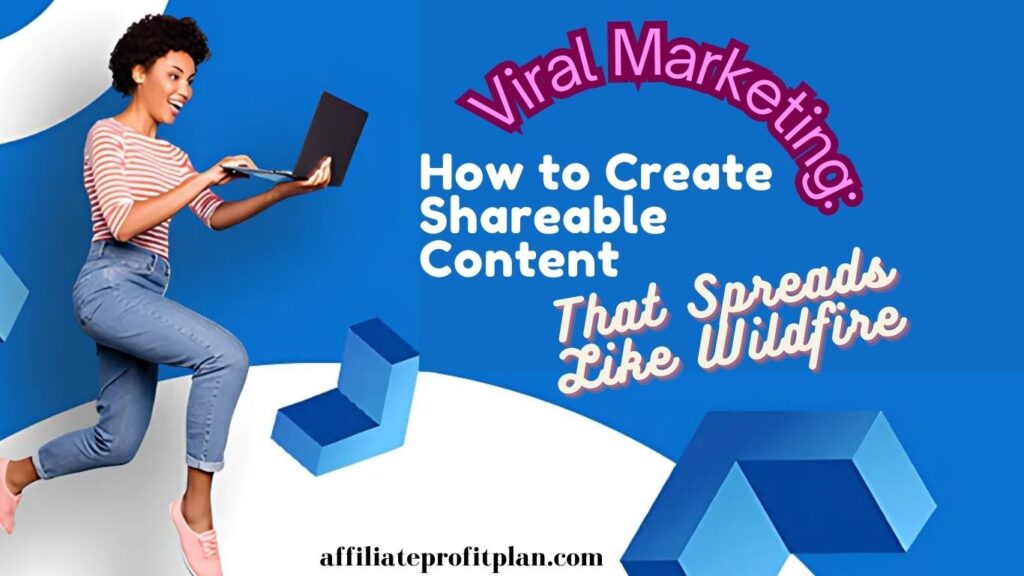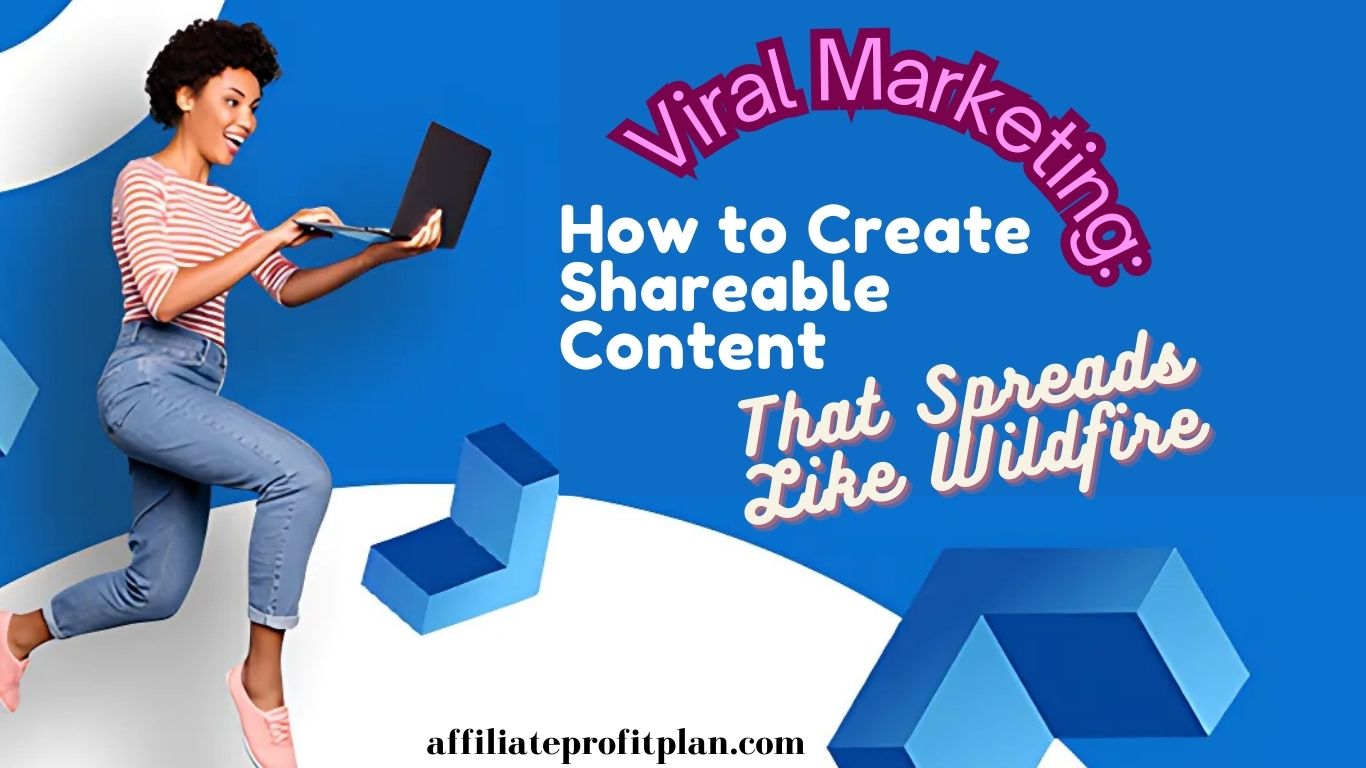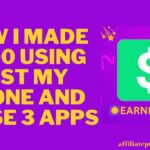Welcome to my article Viral Marketing: How to Create Shareable Content That Spreads Like Wildfire. Ever wondered why some videos, memes, or tweets explode overnight while others barely get a pity like from your mom? That, my friend, is the magic of viral marketing—the art (and science) of creating content so irresistible that people can’t help but hit the share button. Whether it’s a quirky TikTok dance, an emotional brand story, or a hilarious Twitter roast, viral content has the power to turn small brands into global sensations. Just ask Ocean Spray—one guy on a skateboard, sipping cranberry juice to Fleetwood Mac, turned their sales into a tidal wave!
But here’s the thing—going viral isn’t just luck. It’s about understanding what makes people engage, what fuels their need to share, and how you can craft content that plays into those psychological triggers. From tapping into emotions like joy and surprise to leveraging trending topics and social media algorithms, there’s a method to the madness. In this guide, we’ll break down how to create shareable content that spreads like wildfire, ensuring your brand isn’t just another forgotten post in the digital abyss. So, grab your metaphorical matchstick—it’s time to set the internet ablaze!
Access My Proven Blueprint for $50-$100 Daily Income – Watch This FREE Video Now >>>

Understanding What Makes Content Go Viral
If you’ve ever posted something online expecting it to go viral—only to hear nothing but digital crickets—you’re not alone. The internet is a wild, unpredictable beast, but viral content isn’t just about luck; it follows a pattern. Think of it like a secret recipe—get the right mix of ingredients, and boom! You’ve got a viral masterpiece.
So, what makes people smash that share button? It all comes down to psychology. Research shows that emotional content spreads like wildfire—but not just any emotions. Joy, awe, surprise, and even outrage are the biggest drivers of viral success. Why? Because people share things that make them feel something. A heartwarming reunion video? Share. A mind-blowing fact? Share. A post that makes them look witty or in-the-know? Double share. It’s human nature—we all want to be the one who discovers something cool first.
Marketing professor Jonah Berger (aka the “science guy” of virality) even developed a STEPPS framework to explain why things go viral:
- Social Currency – People share things that make them look smart, funny, or interesting. (Think: witty memes and clever one-liners.)
- Triggers – Content linked to everyday experiences sticks in our brains. (Remember how everyone suddenly craved cranberry juice after that viral TikTok?)
- Emotion – The stronger the emotion, the more likely people will share. (Tearjerking ad? Viral. Cute dog doing a backflip? Viral.)
- Public – If it’s visible and easy to imitate, it spreads. (Hello, TikTok challenges!)
- Practical Value – Useful content, like hacks and tips, gets shared because it helps others.
- Stories – People love a good narrative. A great story gets passed along like digital folklore.
So, the next time you’re creating content, ask yourself: Does this evoke emotion? Does it make people look good for sharing it? Is it relevant and easy to remember? If the answer is yes, congratulations—you just cracked the virality code!
The Psychology Behind Shareable Content
Ever wonder why people share certain posts like their life depends on it, while others get ignored like a spam email? It’s not random—there’s actual science behind it. At its core, sharing is a social act, a way for people to express themselves, connect with others, and (let’s be honest) look cool in the process. Nobody shares something just for the sake of it—there’s always a psychological trigger at play.
1. Emotions Rule the Internet
If content doesn’t make people feel something, it’s going straight into the digital void. Research shows that high-arousal emotions—like joy, awe, surprise, and even anger—drive the most shares. That’s why a hilarious meme, a jaw-dropping news story, or a heartwarming reunion video spreads faster than gossip at a family barbecue.
Think about it: Have you ever shared a video of a dog heroically saving another dog? Of course, you have. Because it’s emotionally compelling. The more intense the feeling, the more likely people will hit “share” faster than you can say “gone viral.”
2. The FOMO Factor
Ah, Fear of Missing Out (FOMO)—the reason people flock to trending topics, challenges, and viral debates. No one wants to be the last to know about the thing everyone’s talking about. Whether it’s the latest TikTok trend or a groundbreaking discovery, people share content to stay relevant and be part of the conversation.
3. Social Proof and Identity
People don’t just share content—they share a reflection of themselves. If something aligns with their values, beliefs, or sense of humor, they’ll proudly put it on display. That’s why motivational quotes, viral Twitter threads, and outrage-fueled rants spread like wildfire. It’s not just about the content itself—it’s about what it says about the person sharing it.
4. Practicality = Shareability
Let’s not forget usefulness. Content that teaches people something valuable—whether it’s a genius life hack, a new productivity trick, or a cooking tip that saves time—gets shared because it makes people’s lives easier. Nobody gatekeeps a game-changing hack (unless they’re evil).
So, if you want your content to spread like wildfire, make it emotional, relevant, and valuable. Give people something that sparks their curiosity, makes them laugh, or helps them impress their friends. Do that, and you won’t need to beg for shares—your audience will do the work for you.
Key Strategies for Creating Viral Content
If you think going viral is all about luck, think again. Sure, sometimes the internet gods bless a random cat video, but most viral content follows a strategy—one that taps into emotions, trends, and smart marketing techniques. So, if you’re ready to craft content that spreads faster than office gossip, here are the key strategies you need to know.
Access My Proven Blueprint for $50-$100 Daily Income – Watch This FREE Video Now >>>
1. Tell a Story That Sticks
People don’t share bland facts—they share stories. Whether it’s an underdog success tale, a feel-good moment, or a jaw-dropping twist, a great story makes content memorable and shareable. Remember the “Share a Coke” campaign? Coca-Cola didn’t just sell soda; they sold personalization, nostalgia, and human connection. If your content tells a story people relate to, they’ll pass it along.
2. Tap Into Trends (But Be Smart About It)
Jumping on trends is like catching a wave—timing is everything. Whether it’s a viral TikTok challenge, a meme format, or a breaking news topic, using what’s already trending boosts your chances of getting noticed. But here’s the catch: it has to feel authentic. Nobody likes brands that try too hard (looking at you, brands that say “vibe check”). Instead, find ways to connect trends to your niche in a way that feels natural.
3. Use Strong Visuals (Because Nobody Reads Anymore)
Okay, people still read—but visuals do the heavy lifting. Bright images, engaging videos, and snackable content (GIFs, memes, infographics) grab attention in a scrolling-obsessed world. That’s why platforms like Instagram, TikTok, and YouTube churn out viral hits daily. Want proof? Just look at how a random corn song took over TikTok and became a pop culture moment.
4. Make It Interactive
People love content they can engage with. Polls, quizzes, “tag a friend” posts, and viral challenges encourage participation, which boosts shares. The ALS Ice Bucket Challenge is the ultimate example—people weren’t just watching; they were doing and then challenging others to do the same. If your content gives people a reason to interact, they’ll help spread it for you.
5. Create Share-Worthy Headlines & Hooks
A great piece of content is useless if nobody clicks on it. That’s why headlines and hooks matter. Whether it’s a curiosity gap (“You Won’t Believe What Happened Next!”), an emotional pull, or a sense of urgency, your opening line should demand attention. Think about BuzzFeed-style headlines or MrBeast’s YouTube video titles—they make you want to click.
6. Encourage Sharing (Because, Duh!)
Sometimes, the best way to get shares is to ask for them. A simple “Tag a friend who needs to see this” or “Share if you agree” can work wonders. Add share buttons in easy-to-find places, and don’t be afraid to remind people to spread the love. After all, if you don’t ask, you don’t get!
At the end of the day, viral content is a mix of psychology, timing, and creativity. It’s about making people feel, engage, and share. Follow these strategies, and who knows? Your next post might just be the one that breaks the internet.
Platforms That Amplify Virality
Creating viral content is only half the battle—the other half is putting it in the right place. You wouldn’t throw a rock concert in a library (unless you enjoy getting shushed aggressively), and the same logic applies to content. Some platforms are built for virality, while others… not so much. If you want your content to explode, you need to launch it where people love to scroll, engage, and share. Here are the top platforms that can take your content from “meh” to “OMG, this is everywhere!”
1. TikTok – The King of Virality
If there’s one platform that turns random people into overnight celebrities, it’s TikTok. With its For You Page (FYP) algorithm, content doesn’t need a big following to go viral—it just needs engagement. Catchy trends, challenges, and short, snappy videos dominate here. The key? Keep it fun, fast, and hook people in the first three seconds. And don’t forget: adding trending sounds can boost your reach like crazy.
2. Twitter (X) – Where Trends Are Born
Twitter is the internet’s news desk and meme factory rolled into one. If something’s viral, chances are it started (or exploded) on Twitter first. This platform thrives on hot takes, humor, and engagement-friendly content like polls, memes, and reaction threads. Witty one-liners? Check. Breaking news? Check. Heated debates that take over the internet? Double check. If you want your content to spread, jump into conversations, use trending hashtags, and keep it snappy.
3. Instagram – Visual Virality at Its Best
Instagram may have started as a photo-sharing app, but these days, Reels and Stories are where the action is. Reels (basically TikTok 2.0) favor short, engaging videos, while Stories let you share interactive content like polls, Q&As, and swipe-up links. Want to boost virality? Use trending audio, collaborate with influencers, and encourage shares through interactive features. Bonus tip: memes and relatable content still thrive on the ‘Gram, so don’t sleep on them.
4. YouTube – The Long-Form Viral Powerhouse
While short videos dominate other platforms, YouTube still holds the crown for long-form content that goes viral. From deep-dive explainers to insane challenges (looking at you, MrBeast), YouTube rewards watch time and engagement. The key here? Click-worthy thumbnails, engaging storytelling, and a killer hook in the first 30 seconds. Oh, and don’t forget YouTube Shorts—this feature is TikTok’s cousin and is a great way to gain traction fast.
5. Facebook – The OG of Sharing (Still Relevant!)
Some people call Facebook outdated, but it still has one of the most powerful sharing mechanisms online. Viral Facebook content often comes in the form of emotionally charged videos, relatable posts, or challenge-based content. Groups and Pages are key here—if your content gets picked up by a niche community, it can spread like wildfire. Bonus tip: Facebook’s algorithm loves comments and shares, so ask people to engage!
6. Reddit – Where Virality Starts in the Shadows
If Twitter is the internet’s news desk, Reddit is its underground lair. Many viral trends start here before they explode elsewhere. Subreddits like r/funny, r/memes, r/aww, and r/nextfuckinglevel are goldmines for viral content. But Reddit isn’t like other platforms—blatant self-promotion doesn’t work. Instead, focus on authentic, high-value posts that encourage discussion. If Reddit likes it, the rest of the internet will follow.
7. LinkedIn – The Unexpected Viral Machine
You might not think of LinkedIn as a viral content hub, but it happens more often than you’d expect. Personal stories, industry insights, and motivational career posts can rack up insane engagement here. The secret? Keep it relatable, add a compelling story, and encourage comments. (And yes, the classic “I was rejected 10 times before I became CEO” posts still perform ridiculously well.)
The Viral Formula: Right Content, Right Platform
Different platforms favor different types of content. Short videos? TikTok and Reels. Witty takes? Twitter. Deep dives? YouTube. The key is knowing where your audience hangs out and what kind of content thrives there. Get that right, and your content won’t just be seen—it’ll be shared, reshared, and talked about everywhere.
Measuring Success & Scaling Your Viral Strategy
So, your content is out in the wild, getting likes, shares, and maybe even a few “This just made my day!” comments. But how do you know if your viral campaign is actually working—and more importantly, how do you repeat the magic? Viral success isn’t just about crossing your fingers and hoping for the best. It’s about analyzing what worked, tweaking what didn’t, and scaling smartly. Here’s how you measure success and take your viral strategy to the next level.
1. Track the Right Metrics (Because Likes Don’t Pay the Bills)
Sure, a million views feel great, but what really matters? Engagement and conversions. Viral content should do more than just entertain—it should drive action. Here are the key metrics to watch:
- Engagement Rate – Likes, shares, comments, and saves. If people are interacting, they care.
- Shares & Virality Coefficient – The true sign of a viral hit? How many people are re-sharing your content.
- Click-Through Rate (CTR) – If your viral post includes a link, how many people actually click?
- Watch Time & Retention (for videos) – Are people sticking around or bailing in the first three seconds?
- Follower Growth – Did your content attract new fans, or was it a one-hit wonder?
- Conversions – If your goal is to sell something, did all that traffic turn into actual customers?
Pro Tip: Use analytics tools like Google Analytics, Facebook Insights, YouTube Studio, or TikTok Analytics to track what’s working.
2. Analyze What Made Your Content Go Viral
Viral success is never random—there’s always a pattern. Look at your top-performing content and ask:
- What emotions did it trigger? (Was it funny, shocking, heartwarming?)
- Was it part of a trend? (And if so, how did you make it unique?)
- Did it spark conversation? (Comments = engagement gold.)
- Which platform performed best? (Maybe your TikTok blew up, but Twitter flopped.)
- What was the format? (Short video? Meme? A controversial hot take?)
Once you find common patterns, you can replicate and refine the formula.
3. Scale What Works (Without Being Annoying)
Going viral once is great. Doing it consistently? That’s where the real game begins. Here’s how to scale up:
- Double Down on Winning Content – If a topic or format blew up, create more of it!
- Repurpose Across Platforms – A viral TikTok? Turn it into a YouTube Short, an Instagram Reel, and a Twitter thread.
- Leverage Influencers & Collaborations – If your content resonated, team up with others to amplify its reach.
- Run Paid Ads on Top-Performing Content – If a post is already viral, a little paid promotion can push it even further.
- Engage with Your Audience – Reply to comments, create follow-up content, and keep the conversation alive.
4. Keep Experimenting (Because the Internet Moves Fast)
What worked last month might not work tomorrow. The best viral marketers stay ahead of trends, test new ideas, and adapt fast. Try:
- New content formats (interactive polls, challenges, live streams).
- Different posting times (your audience might be more active at odd hours).
- A/B testing (different headlines, thumbnails, or captions to see what sticks).
And remember: not everything will go viral—but every experiment gets you closer to your next big hit.
5. Monetize Your Virality (Because Likes Won’t Pay Rent)
Viral content is cool, but turning it into money is even cooler. Once you have an engaged audience, you can:
- Sell a product or service (dropshipping, merch, digital courses, etc.).
- Offer sponsorships or brand deals (companies love viral creators).
- Monetize through ad revenue (YouTube, TikTok Creator Fund, etc.).
- Drive traffic to a website or affiliate links (more clicks, more cash).
The key? Always have a plan for what happens AFTER the viral moment.
Final Thoughts: Viral Growth is a Strategy, Not an Accident
Going viral isn’t just about luck—it’s about understanding your audience, tracking what works, and scaling smartly. Measure your success, tweak your strategy, and keep experimenting. Because when you crack the viral code once, you’ll be able to do it again and again.
Conclusion: The Viral Formula—Rinse, Repeat, Dominate
So, there you have it—the not-so-secret recipe for creating content that spreads like wildfire. We’ve covered everything from what makes content go viral (hint: emotions + relatability), to the psychology behind sharing (people love looking smart, funny, or caring), to the strategies and platforms that amplify virality. And let’s not forget the power of measuring success—because what’s the point of going viral if you don’t know why it happened?
Access My Proven Blueprint for $50-$100 Daily Income – Watch This FREE Video Now >>>
But here’s the deal: going viral isn’t magic—it’s strategy. Sure, luck sometimes plays a role (hello, cat videos that accidentally get 10M views), but consistently creating shareable content is a skill you can master. The more you experiment, analyze, and refine your approach, the higher your chances of hitting that viral jackpot over and over again.
And remember—virality alone doesn’t pay the bills. Turning viral moments into long-term audience growth, brand loyalty, and actual revenue is where the real game begins. So, don’t just chase the next trending meme—build a brand, create value, and make your viral success work for you.
Now, go out there and create something worth sharing!
Thanks a lot for reading my article on “Viral Marketing: How to Create Shareable Content That Spreads Like Wildfire” till the end. Hope you’ve helped. See you with another article.










